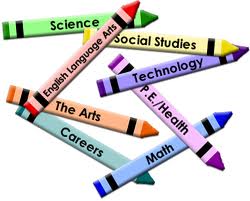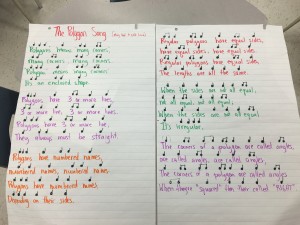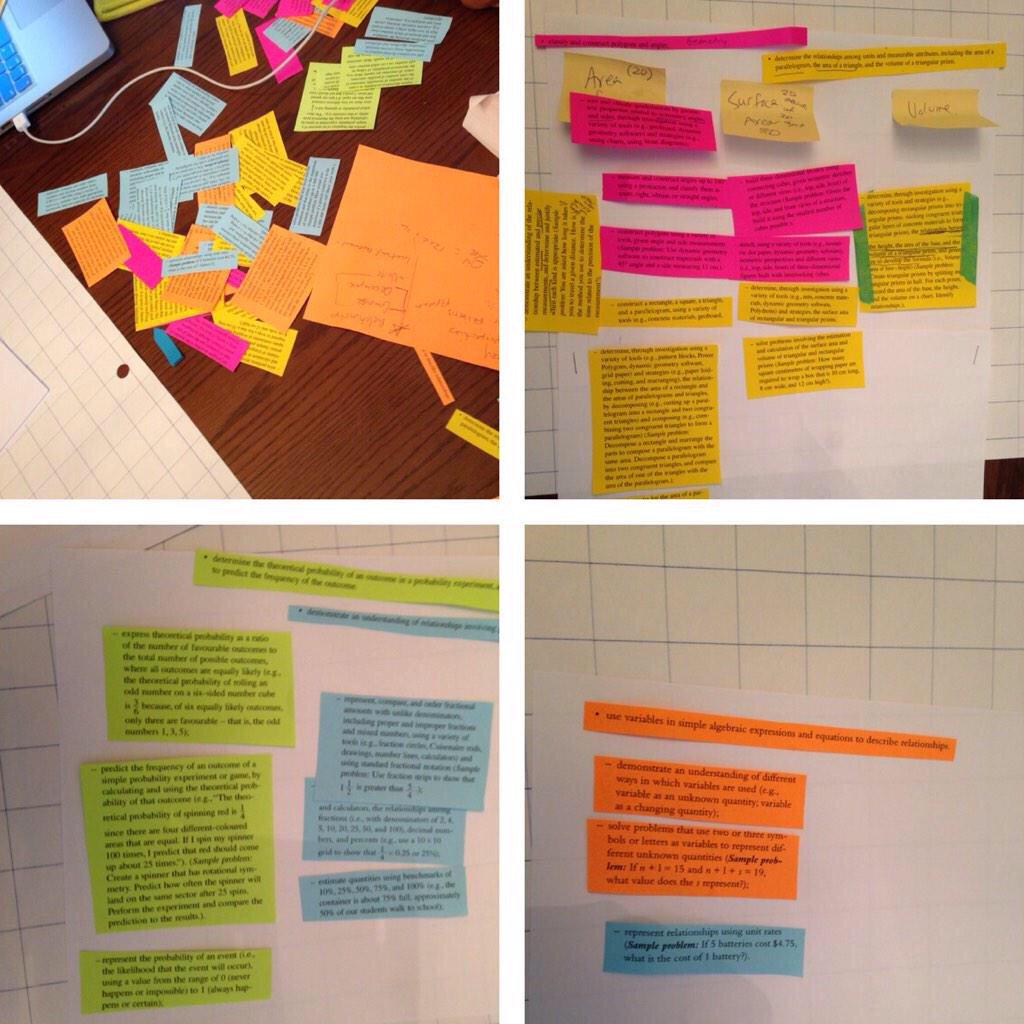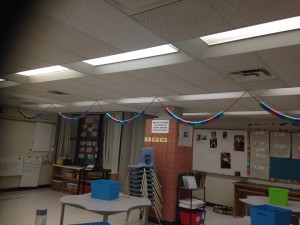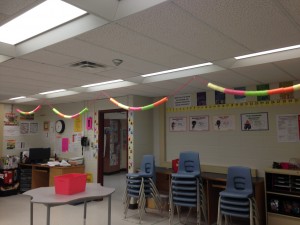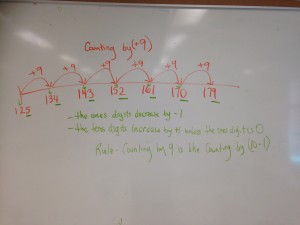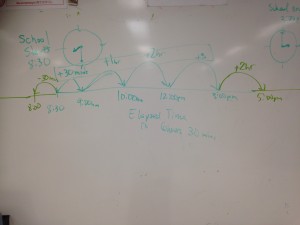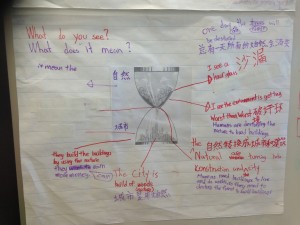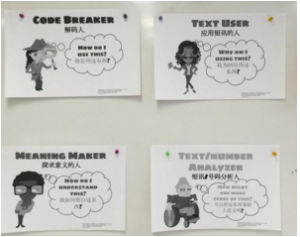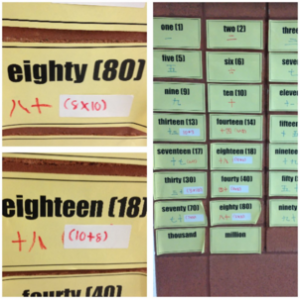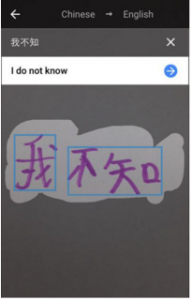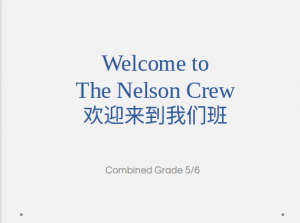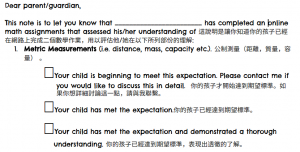As an elementary teacher, I have always integrated curriculum. The first reason to integrate is to cover a myriad of curriculum expectations; the second reason is that some curriculum just naturally flow together. Integrated curriculum programs show high levels of student engagement and academic performance (Clausen & Drake, 2010). Some curriculum natural fits include Science/Geography, History/English, and Mathematics/Science. Some Arts subjects, such as Drama and Visual Arts, make a multilayered approached to lessons and assessments as they add an additional venue to show learning. In middle school, I have had great success teaching the combined subjects of Math/Science (4 years in grade 8) and Language/Social Studies (4 years in grade 7).
In my master’s thesis work, I explored the concept of using Drama to teach Science. I developed many engaging lessons to act out Science concepts. As I implemented these lessons, I noticed that Science concepts were being well covered but, Drama concepts were not. In the lessons, Science was the main course and Drama was the side dish. As a PhD student, I taught a pre-service course in integrated studies at Brock University. The Intermediate/Senior pre-service teachers had challenges implementing the concepts into their practice, especially given the curriculum content requirements for secondary school credit courses.
Through my 18 years teaching at the elementary level (grades 2 to 8), I have come to realized that trying to integrate every subject into a unit or assessment is fruitless as one subject is always dominant (or the main course). For example, Mathematics always needs to be the main course because as a side dish, it is not covered to the depth in which is needed. As the middle school grades get into the depth of the curriculum content, it gets harder for teachers to cover a particular subjects well because the curriculum expectations are more extensive . Due to this, core subjects such as Mathematics and Science are taught separately in grades 9 to 12 at the secondary school level.
Project-based instruction (Boss & Krauss, 2007) relies on the idea of integrated curriculum/studies. It is an interesting concept but as a researcher, I have found little peer-reviewed documentation stating it was sustainable in all school settings and at all grade levels. In addition, there are many versions of models (Drake, 2007) that may or may not fit into schools’ organizational or physical structures. For example, teaching integrated curriculum units requires teachers to share equipment and other resources at the same time. In addition, teachers must be provided with additional planning time to accommodate the increased planning and collaboration needed so teachers can work together (Boss & Krauss, 2007).
Integrated curriculum models can vary greatly. Some models are curriculum driven and some are timetable driven. Timetable driven models present some challenges as there is always one class that gets a missmash of teachers teaching parts of various content areas. Based on my own anecdotal evidence, I have seen timetables where teachers are sharing Math strands with one teacher teaching Data Management/Probability and the other teaching all other Math strands. I have known of homeroom classes to have up to 5 teachers teaching the core curriculum content while other classes just have their homeroom teacher teaching these subjects. Given this model, I wonder how equitable and inclusive this particular timetable is for all students.
As a teacher with experience teaching grades 2 to 8, I find curriculum integration works well up to grade 6. After grade 6, the content curriculum is too deep for teachers to plan and teach all strands. I find it is also very taxing for teachers to deal with the complexity of curriculum integration and in addition, have to face the challenges of having many students with Special Education, English language learning, and behaviour needs. Further, the amount of content knowledge teachers need to teach these subjects is great. In Ontario, intermediate teachers need only two teachable subjects. In integrated curriculum models, teachers are expected to be generalists instead of specialists. This is especially challenging when some teachers do not have university Math credits or Math qualifications.
Project-based instruction is set in a collaborative-driven collegial framework.”Planning for integrated curriculum is a collaborative venture [where] educators use a backward design approach” (Wiggings & McTighe, 2005). “Teachers begin by exploring expectations to determine the most important to know, do, and be, on how to assess student outcomes” (Drake & Reid, 2010). Project-based curriculum integration texts, such as Reinventing Project-Based Learning (Boss & Krauss, 2007) provide teachers with the “what to do” but not always the “how to do it”. Nor do these texts (usually US based), account for the accountability of teachers to cover the curriculum required by their ministry or board. These texts do not account for the extra time teachers need to collaborate as timetables may not free up extra time for joint meetings within the instructional day. Teacher collaboration can have its own challenges as it can be hindered by competition and individualism amongst colleagues (Fullan & Hargreaves, 2012; Hargreaves, 1994; Weston, 2015).
The idea of integrated studies/curriculum, can be done well, but not at a full-blown, “teaching with all subjects” together model. Some curriculum subjects, especially Math, need to be the main dish and need to be at the main focus of lessons and assessments. Further, schools need to re-structure their time tables to allow teachers to collaborate to develop integrated lessons and assessments. And I believe that when working collaboratively, teachers are better together.
Integrated curriculum/studies can be a very striking way to engage students, especially since it reflects multi-disciplined real life world. But the “all-or-nothing” integrated curriculum exhausts teachers, teaching everything, and leaves many subjects taught as second thought, side dishes.
Collaboratively Yours,
Deb Weston
References
Boss, S., & Krauss, J. (2007). Reinventing project-based learning. Your field guide to real-world projects in the digital age. International Society for Technology in Education, Washington, DC.
Clausen, K. W., & Drake, S. M. (2010). Interdisciplinary Practices in Ontario: Past, Present, and Future. Issues in integrative studies, 28, 69-108. Downloaded at https://eric.ed.gov/?id=EJ1101101
Drake, S. & Reid, J. (2010)., Integrated Curriculum, What works? Research into practice Series, Government of Ontario. Downloaded at http://www.edu.gov.on.ca/eng/literacynumeracy/inspire/research/WW_Integrated_Curriculum.pdf
Drake, S. M. (2007). Creating Standards-Based Integrated Curriculum: Aligning Curriculum, Content, Assessment, and Instruction. Corwin Press, A SAGE Publications Company. 2455 Teller Road, Thousand Oaks, CA 91320.
Fullan, M., & Hargreaves, A. (2012). Professional capital: Transforming teaching in every school. Teachers College Press.
Hargreaves, A. (1994). Changing teachers, changing times: Teachers’ work and culture in the postmodern age. Teachers College Press.
Weston, D. (2015). Investigating the relationships between teacher identity norms and collaboration. PhD Thesis, Brock University, St. Catharines, ON. Downloaded at http://dr.library.brocku.ca/handle/10

